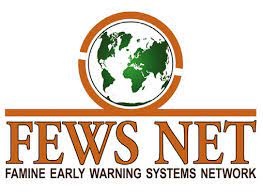The Famine Early Warning Systems Network (FEWS NET) has released a report forecast predicting below-average rainfall across much of Southern Africa due to the ongoing strong El Niño phenomenon. The dire prediction has raised concerns about the potential impact on agriculture, water resources, and food security in the region.
“The ongoing strong El Niño event, which is forecast to reach peak intensity in late 2023 and dissipate by mid-2024, is expected to drive below-average rainfall across much of Southern Africa. The rainfall deficits will likely result in below-average 2024 harvests, including in surplus-producing South Africa and Zambia. Furthermore, this shock follows localized below-average harvests in 2023 and poor macroeconomic conditions in Malawi and Zimbabwe,” read the report
According to estimates FEWS NET says over 20 million people will require urgent food assistance during the peak of the lean season from January to March 2024.
“The negative impacts of the El Niño during the 2023/24 rainy season, including low labour opportunities and high food prices, are expected to offset any recent improvements from declining inflation, Meanwhile, other hazards in the region are also contributing to food assistance needs, including conflict in the Democratic Republic of Congo (DRC) and Mozambique. Overall, it is estimated that over 20 million people will be in need of food assistance during the January-to-March 2024 peak of the lean season,” said FEWS NET
The anticipated below-average harvests, the report said are expected to be exhausted earlier than usual, resulting in exceptionally high food assistance needs.
“Furthermore, the expected below-average 2024 harvests will be exhausted earlier than usual, leading to comparably high food assistance needs at the start of the following lean season in late 2024 and signaling even higher needs when the lean season peaks in early 2025. Deficit-producing areas of Zimbabwe, southern Malawi southern and central Mozambique, and southern Madagascar are of highest concern,” read the report.
FEWS NET says the erratic start to the 2023/24 rainy season is predicted to result in below-normal labor opportunities for land preparation and planting and a similar trend is anticipated in early to mid-2024, aligning with the expected below-average 2024 harvest.



